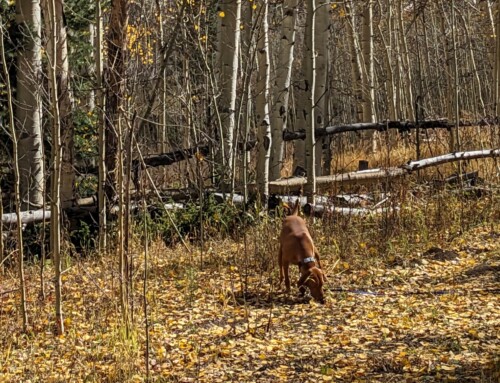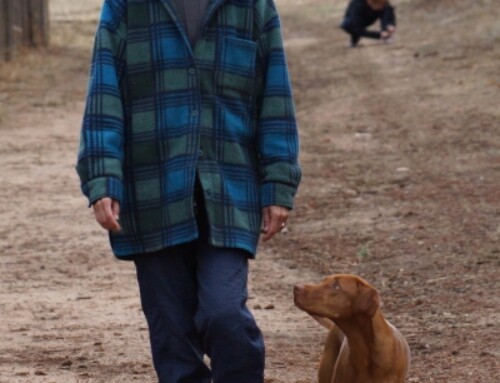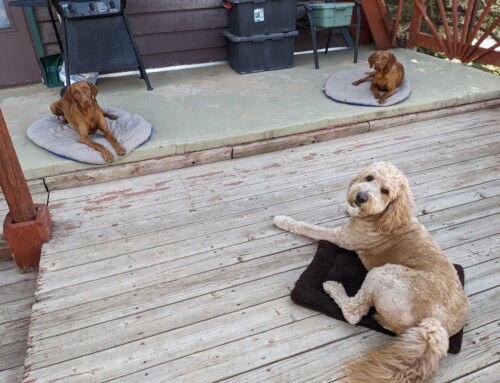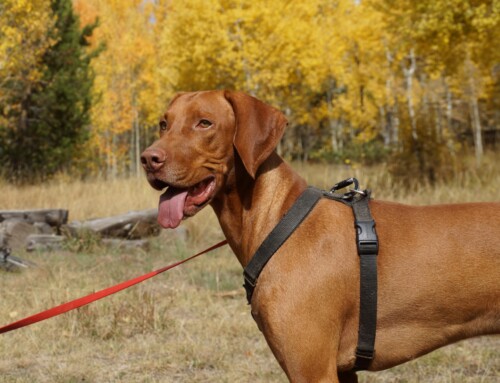DOG TRAINING OFFERED IN-PERSON AND ONLINEOur dog training services are delivered in almost any format that meets your needs. We have GROUP CLASSES at our indoor and outdoor facilities on our farm, ONLINE LIVE STREAMING classes, and SELF-PACED VIDEO-BASED training through our Online Dog Training Course. Our PRIVATE TRAININGS can be done in-home, outside, in public dog-friendly locations, at our facility on our farm, online via phone or video conferencing and through email. |
Question:
This is the first dog I have had on my own. How can I learn to communicate more clearly with him?
The Trainer Answers:
The first step in communicating with our dogs is to learn to understand what they are communicating to us. Sometimes we are so busy trying to tell our dogs what to do that we forget to listen to them. Good communication is a two-way street.
Learn to read signs of stress and arousal in your dog. Dogs are most likely to bite when they are highly stressed or highly aroused. Can you pick up on early signs of stress or arousal? If not, consider seeking out resources such as books, videos or trainers who can help you understand what your dog is communicating. I offer an intro to reading Dog Body Language in the first session of my Basic Training classes and in my Supplemental Basic Training Online course.
Once you better understand how your dog communicates, it will be easier for you to better communicate with your dog. Dogs are much better at reading our body language than understanding the words we are saying. Dogs don’t speak English, but they can learn to understand a pretty large number of words. However, we often give them credit for understanding words more often than they do.
For example, just because your dog has responded to come or stay on some previous occasions, we often assume they absolutely know what it means and should be able to respond every single time in the future no matter what else is going on. That is not the case!
Since reading body language is more natural and easier to understand for dogs, they are often picking up on clues we are giving – either intentionally or without even realizing it – while we are speaking. We think our dog is responding to our verbal cues, when really the most salient information for them is our body language.
If you think your dog understands “sit” try these experiments. In each case, have your hands behind your back and if standing, stand straight up – no leaning over. Ask for a sit when your dog is ten feet away from you. Ask for a sit when your dog is lying down. Ask for a sit when you are facing directly into the wall. Ask for a sit when you are lying down on the floor. How did your dog do? Does he really understand the verbal cue sit in all contexts?
Dogs are also very good at picking up how we are feeling through our tone of voice. If I say the word “come” but my tone of voice and body language indicate I am angry, I am really telling my dog to “stay away.” Guess what? They usually stay away!
Here is another experiment to try. If you think your dog knows “wait” or “stay”, place him in his “wait” or “stay” without using any body language or hand signals. Now, try the following: turn your back and walk away; walk in a circle all the way around your dog; walk a few feet directly in front of your dog, face him, and lean forward with hands on your legs just above your knees; stand a few feet away from your dog and say a word that sounds similar to but is not your release word – if your release is “free” try saying “French Fries”. How did he do?
Are you getting a better idea of what signals your dog is truly understanding and not understanding?
Take the time to think about how and what you are really communicating to your dog. Experiment a bit, and you might be surprised at what you are really saying to your dog.
Have someone else watch you working with your dog, and see if they can pick up on the subtle signals you are sending.
Our goal is to positively impact the lives of as many dogs and their families as we can, in part through our extensive library of video, infographics and text articles. 
|













